Discover the Advantages of Offset Printing for Your Business
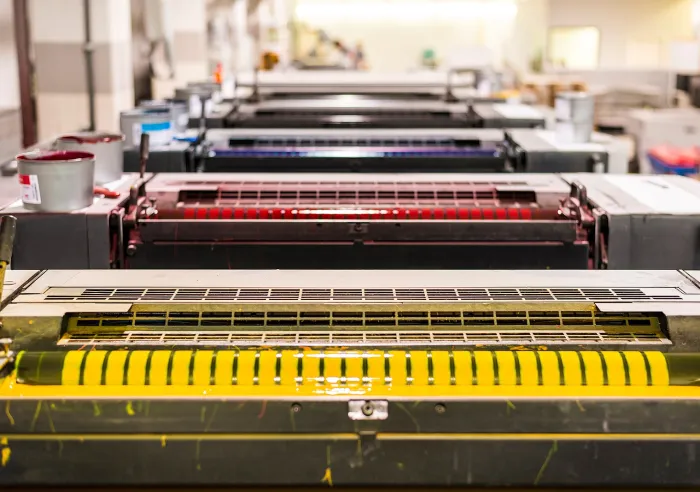
estimated reading time: 5 minutes
Offset Printing: the Perfect Fit for Volume Orders
Many businesses use commercial printing services to produce professional-looking
marketing materials such as brochures, catalogs, and presentation folders. Custom-printed
operational items such as training manuals, price lists, and multi-part forms are
also commonly purchased from a commercial printer to help improve the
efficiency of various functions within the workplace.
Regardless of the types of print materials a business buys
from a commercial printing company, there will generally be two production
options - Digital printing or Offset printing.
The Digital printing process transfers electronic images
directly to the press for output. These images are applied to the paper
substrate using use either laser or ink-jet technology. Laser printing uses
toner, which is a fine powder made from granulated plastic and pigments. An
electrostatic charge attracts the toner to the paper substrate where it is
bonded to the paper fibers using heat and pressure. Conversely, an ink-jet printer
applies small droplets of liquid ink to the surface of the paper. Heat or UV
light is then used to quickly dry the ink.
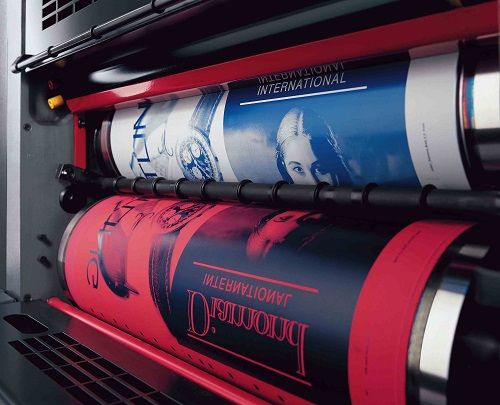
The Offset printing process uses a sequence of rotating
cylinders to apply the ink to the paper substrate. Offset printing also requires
the creation of printing plates, which are thin sheets of polyester or aluminum
that have been etched with the images to print. Each printing plate is mounted
around a cylinder and receives a fresh layer of ink with each rotation. The
inked image on the plate cylinder contacts a second cylinder, which has been
wrapped in a rubber blanket. The image is then offset from the plate cylinder onto
the blanket cylinder. As the paper substrate passes between the rotating blanket
cylinder and a third cylinder known as the impression cylinder, the inked image
is offset onto the paper. Each ink color used for a project will have its own
plate(s) and set of rotating cylinders. Offset printing is the traditional form
of printing, where the ink is actually pressed onto the paper substrate.
Because digital printing does not involve creating,
mounting, or adjusting printing plates, it does not incur much in the way of
set-up costs. As such, it does not have an initial cost burden that needs to be
overcome through volume. This is why Digital printing is the cost-effective
choice for producing smaller production runs (orders less than 1,000 units).
Since the offset printing process requires the use of printing plates, it incurs some upfront make-ready costs prior to each production run. This means a higher production volume is needed so these upfront costs can be distributed across more units. But once an offset press has been calibrated and starts the actual print run, the cost of applying ink to paper is minimal. This is why offset printing is the cost-effective choice for producing larger production runs (orders of 1,000 units or more). The unit cost comes down dramatically as the order volume increases.
Needless to say, as a business grows and the size of its
print orders start to reach 1000 units or more, this is the time to consider switching
from digital printing to offset printing. Offset printing offers many
advantages to a business, which are outlined below…
Top Advantages of Offset Printing
Low unit cost for larger production runs -
For businesses that use high volumes of print materials, offset
printing offers substantial cost savings.
Although the initial setup costs for offset printing can be
higher than digital printing, offset printing becomes the more cost-effective option
as the order quantity increases. This is because the majority of expenses
associated with an offset production run are from creating the printing plates
and setting up the press. Once these front-end tasks are complete, the cost per
unit decreases significantly as more and more units are produced.
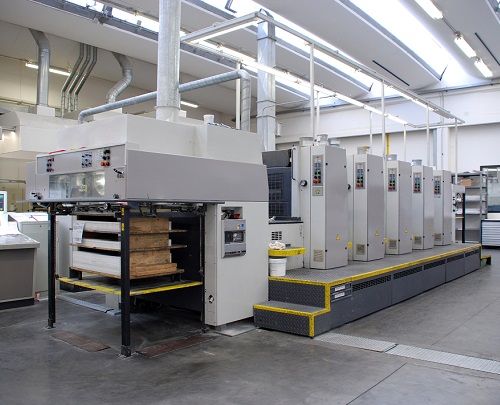
Superior image quality -
Offset printing is known for its exceptional print quality. The
offset process delivers sharp, clean images and detailed text; ensuring print
materials are visually appealing and professional.
Being able to consistently reproduce intricate details and
vibrant graphics is why offset printing is the preferred method for high-end
projects, such as full-color brochures, catalogs, and magazines.
In addition, the rubber blanket used in the offset process is
able to conform to many different printing surfaces, allowing for smooth and uniform
ink coverage even on textured stocks.
On a side note, the rubber blanket also reduces wear on the
printing plates. This allows the plates to be long-lasting and reusable, thus
eliminating the plate costs for exact reorders.
Ideal for projects that require larger sheet sizes -
Most sheet-fed offset presses can print on much larger
sheets than sheet-fed digital presses. Of course, this allows an offset press
to accommodate a wider range of print projects.
The larger sheet sizes of offset presses also means more
images can be printed per press impression, which is important for projects
that print multiple
up on a sheet.
Able to print exact Pantone spot ink colors -
In addition to CMYK printing, offset presses can print every ink color in the Pantone color palette, including metallic and fluorescent inks.
This surpasses the color capabilities of digital printing.
Being able to print exact Pantone colors is important to
many businesses and organizations because it ensures a precise match for their
brand colors, whether printing marketing materials, business stationery, or any
other branded pieces.
Wide selection of paper types -
Offset printing not only offers more ink choices than digital
printing, it also offers more paper choices. For example, offset presses can print
on heavy cardstocks, which most digital presses cannot do.
Being able to select from a wider variety of paper types,
weights, and textures gives offset printing unmatched flexibility when it comes
to finding the best paper option to suit a project's specific needs.
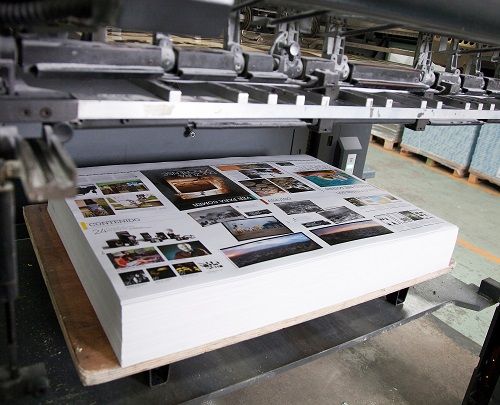
Compatible with every coating and finishing option -
Offset printing is 100% compatible with every coating and
finishing technique. This includes laminates, UV spot or flood coats, soft
touch finishes, embossing, debossing, foil stamping, and any other enhancement
a print project might need to make a memorable impression.
Looking for affordable Offset Printing Services?
Color Vision has the offset printing capabilities you
are looking for. We can produce projects using CMYK 4-color process, Pantone
spot colors, Black/Grayscale, or any combination of these color systems. As a
full-service printer, we also offer a wide selection of finishing and bindery options.
Just give us a call at 800-543-6299 to discuss
your project. Or, if you would like to submit a quote request online, use our simple
Quote Request form and we will be happy to send you a quote via email.
As always, we hope to hear from you soon and look forward to
assisting with your custom printing needs!
Related Articles
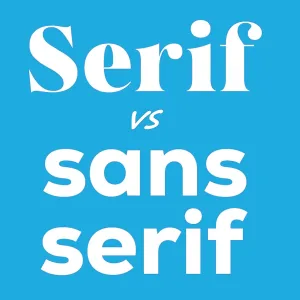
Serif vs Sans Serif Fonts: Which to use for a Print Project?
Read This Article

7 Interesting Facts you might not know about Offset Printing
Read This Article
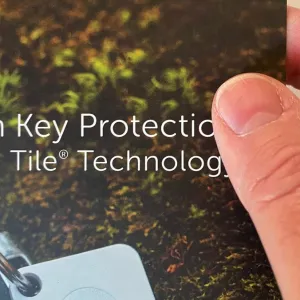
Print Marketing: Exploring the Allure of a Soft Touch Finish
Read This Article
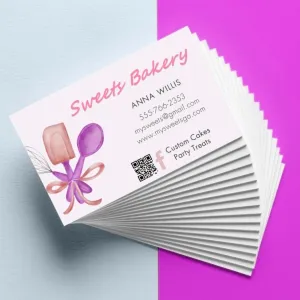
Business Card Printing: 5 Common Mistakes to Avoid
Read This Article